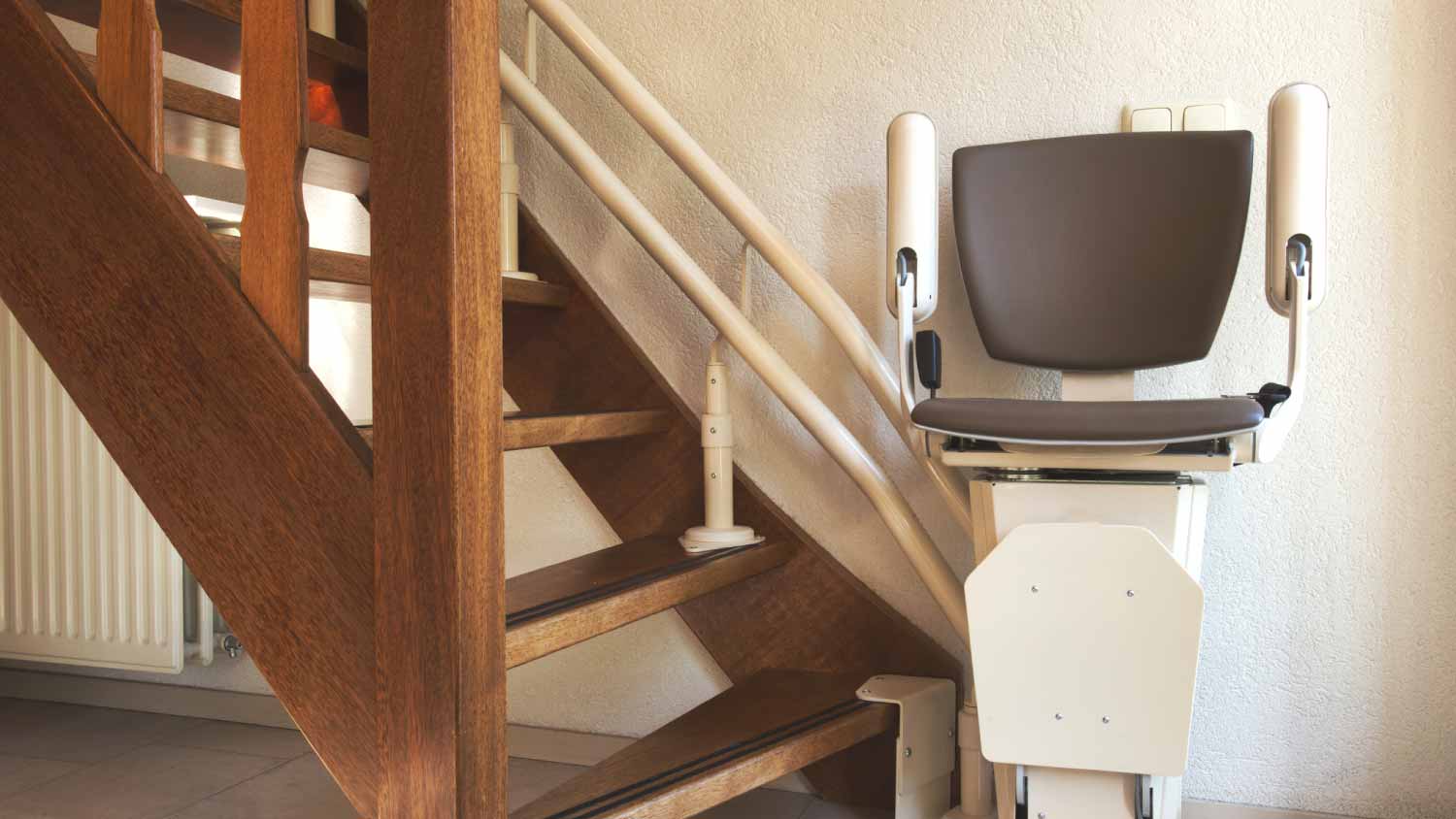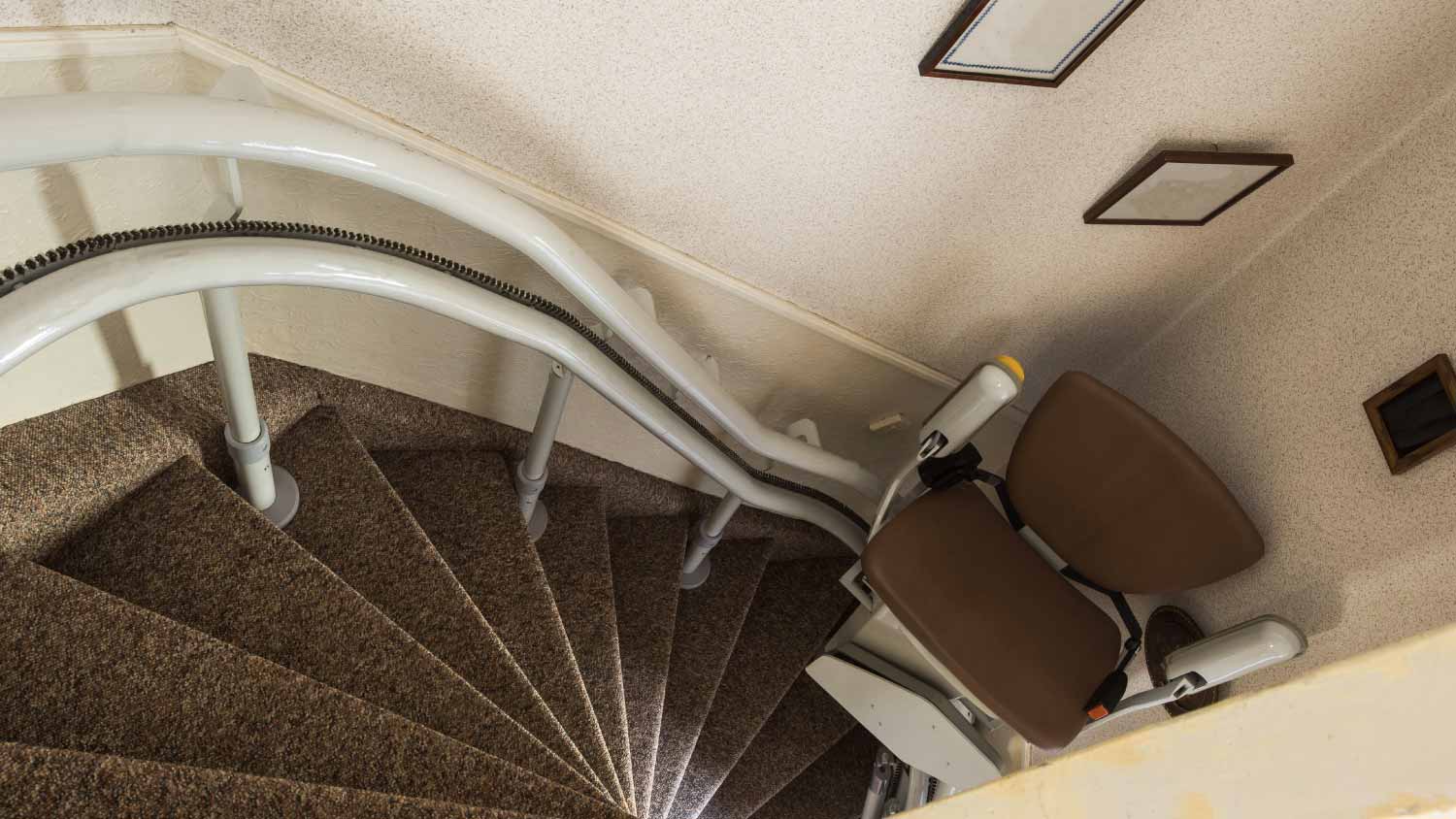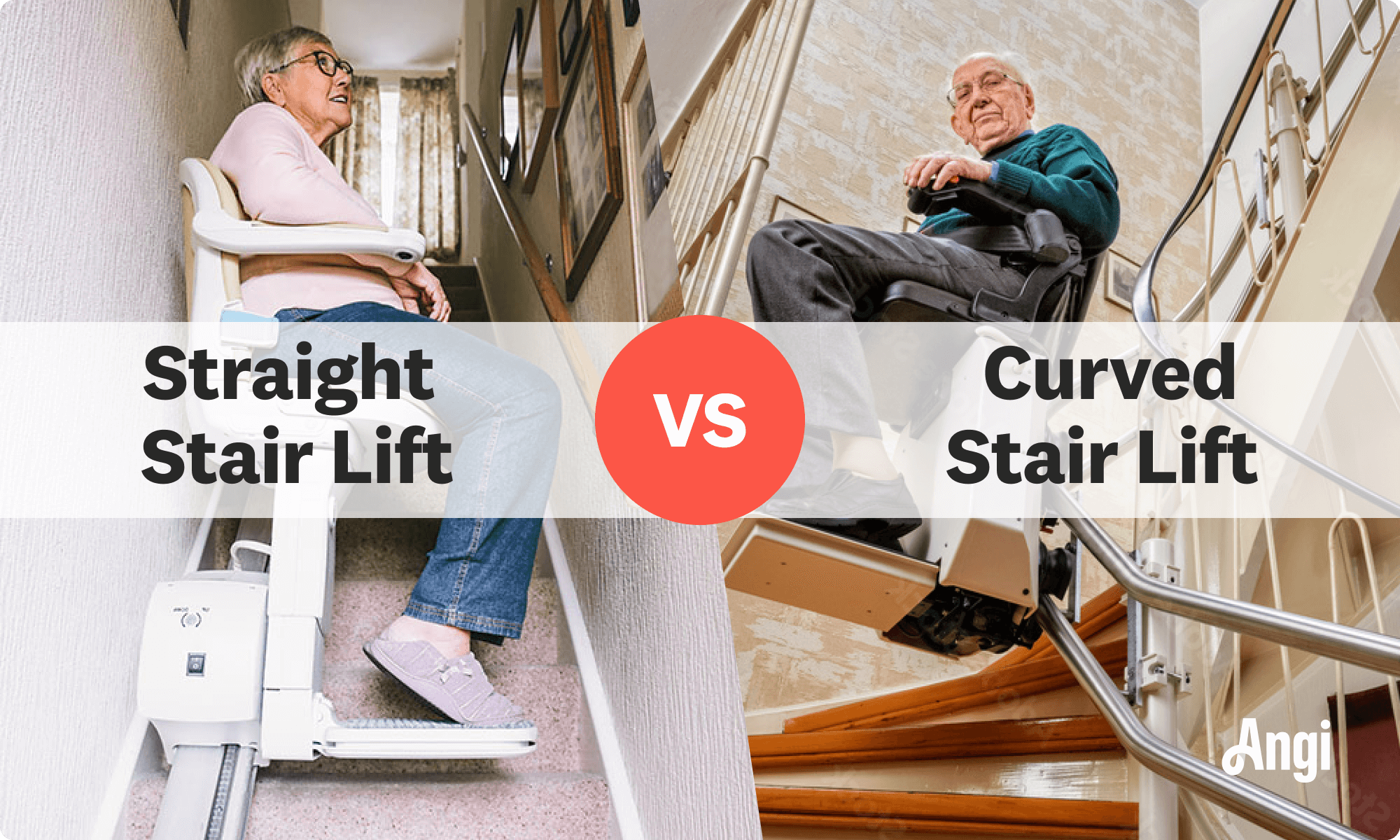What’s the Difference Between a Curved Stair Lift and a Straight Stair Lift?
Elevate your knowledge of stair lifts to make an informed decision


Straight stair lifts can only be used on straight stairways.
Curved stair lifts can accommodate curved stairs or those with transitional landings.
Curved stair lifts can also work with multiple home levels.
Because they are customized to your home, curved stair lifts are more expensive.
Installing a stair lift in your home can greatly assist loved ones with mobility challenges by making it easier for them to access all or most areas of the house. It can also support your own aging in place, providing peace of mind when navigating stairs may become difficult. Deciding between a curved or straight stair lift depends on the type of stairway you have, your budget, and how quickly you need the installation completed. We’ve rounded up all the key factors to help you make an informed decision for your home.
If a stair lift is improperly installed, the homeowner risks injury and/or damage to the stair lift. It's highly recommended to contact a pro to ensure the installation is done properly.
Curved Stair Lift vs. Straight: Key Differences
The key difference between the two main types of stair lifts—curved stair lifts and straight stair lifts—is that a curved stair lift can be used on stairs with curves or transitional landings; straight stair lifts are intended for straight stairways only. Because curved stair lifts need to be customized to your specific stairway, they are more expensive than straight stair lifts.
What Is a Straight Stair Lift?

Straight stair lifts are the most common kind—they are fitted to traditional, straight stairways. They utilize a straight rail that moves parallel to the stairs. The rail can be mounted on either side of the stairs; with a straight stair lift, there should be no twists, bends, turns, or landings in the stairway itself.
Usually, the straight stair lift does not require any construction or special modifications to your home, as the stair lift is mounted directly to your stairs rather than the wall. The underside of the rail has brackets that are securely fastened to the stairs, with the footrest and seat mounted on the outside chassis, a part that slides up and down the rail.
Straight stair lifts are less expensive than curved ones because they are straightforward (no pun intended) and don’t require much customization.
| Pros | Cons |
|---|---|
| Less expensive | Only works with perfectly straight stairways |
| Easy installation | Might lack resale value |
| Widely available—can be purchased quickly |
Best for:
Homeowners on a budget
Those who need a more accessible home on a tight timeline
Pros of Straight Stair Lifts
Because straight stair lifts are meant to be installed quickly, they can be purchased easily—they aren’t custom-built and are available through many mobility equipment suppliers. You could even choose to rent this stair lift instead of buying it. This is helpful if you need to make your home accessible and have a small window in which to do so—a family member might have been recently injured, for instance, and you want to ensure they have full mobility within your home ASAP.
Straight stair lifts are also much more affordable than curved ones. The cost for a straight stair lift runs between $2,000 and $9,000.
Cons of Straight Stair Lifts
The main disadvantage of straight stair lifts is that they can only be installed on straight stairways. If your stairs have any curves, you will need to have a custom, curved stair lift designed and installed.
Also, because straight stair lifts only work with a specific type of stairway, it might be difficult to resell your lift to another homeowner who has a different stairway than you do, especially if theirs is curved.
What Is a Curved Stair Lift?

Curved stair lifts are intended for homes with stairs that curve or have transitional landings. They can also be useful in homes with multiple floors, such as a basement and an upstairs level.
Curved stair lifts, unlike straight stair lifts, need to be customized to your home—this makes them more expensive than their straight counterparts.
Because they are custom-built, the installation is slightly more demanding than that of a straight stair lift and takes a little longer.
| Pros | Cons |
|---|---|
| Customized to your home’s stairway | More expensive |
| Can be used with multiple stair flights | Longer installation time |
| Superior design options | More complicated repair and maintenance |
Best for:
Homeowners who have curved stairwells
Homes with multiple floors
Homeowners who prefer to custom design the look of their stair lift
Pros of Curved Stair Lifts
Many homeowners prefer the customization of curved stair lifts—not only can they be built to fit your home’s specific stairway, even if it runs multiple floors or has many twists and turns, but they can also be designed to match your home’s aesthetic. The curved stair lift is personalized from start to finish.
Cons of Curved Stair Lifts
Given the personalization of curved stair lifts, they are more expensive than straight stair lifts. The cost of a curved stair lift typically starts at around $10,000.
In addition to the higher cost, they also take more time to install. You will first need to work with a local stair professional to discuss the customization plan, then wait for the installation to happen, which can take four to six weeks, on average.
Because the mechanics of a curved stair lift can be more complex, so can their repairs and maintenance. You might find that it is difficult to locate a specific part for something so bespoke.

Straight vs. Curved Stair Lifts: Side-by-Side Comparison
Look closely at these two stair lift options side-by-side before making a decision for your home.
Appearance: Curved
Because curved stair lifts can be fully customized, you can choose the color and overall look to best match your home.
Price: Straight
Straight stair lifts start at $2,000, while curved stair lifts start at $10,000. Curved stair lifts need to be fully customized to your home.
Ease of Installation: Straight
Straight stair lifts can be installed very quickly—usually in about a week—while curved stair lifts can take multiple weeks, including time for planning and customization.
Customization: Curved
As discussed, curved stair lifts can be customized in various ways beyond the stairway’s shape. You can choose alternate colors and more options, and a curved stair lift can be used with multiple floors.





- Carpentry
- House Framing Companies
- Baseboard Installation
- Subcontractors
- Pole Barn Builders
- Elevator Companies
- Grab Bar Installation
- EV Charger Installer
- Caulking Services
- Walk-In Tub Installers
- Attic Ladder Installation
- Bathroom Fan Installation
- Bathroom Vanity Installation
- Tub to Shower Conversion
- Balcony Contractors









